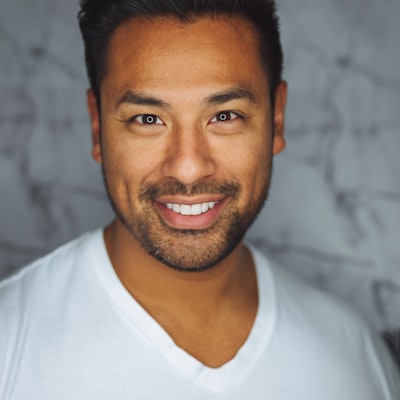Yoga exercise Body, Yoga Soul: Can We Have got Both?

It's easy to understand precisely why John Friend highly recommends the reserve Yoga Body: The particular Origins of Modern day Posture Yoga "for all sincere students of yoga. inch Because, Mark Singleton's thesis is actually a properly researched expose involving how modern hatha yoga, or "posture practice, " when he terms it, has changed within and following the practice still left India.
But typically the book is mainly concerning how yoga altered in India on its own in the last 150 years. Just how yoga's main, contemporary proponents-T. Krishnamacharya plus his students, K. Patttabhi Jois plus B. K. S. Iyengar-mixed their organic hatha yoga techniques with European gymnastics.
This was how many Indian yogis coped with modern quality: Rather than left over in the silo from the Himalayas, they will relocated to the city and embraced the oncoming European ethnical trends. They specifically embraced its even more "esoteric kinds of gymnastics, " such as important Swedish techniques associated with Ling (1766-1839).
Singleton uses the phrase yoga exercise as a homonym to explain the particular main goal regarding his thesis. Of which is, he emphasizes that the word yoga has several meanings, depending on who uses the term.
This importance is in on its own a worthy business for students of everything yoga; to comprehend and even accept that your yoga exercises may not end up being those yoga since my yoga. Basically, that you have many paths of yoga.
Inside that regard, Ruben Friend is absolutely proper: this is the most comprehensive study with the culture and history of the influential yoga exercise lineage that works from T. Krishnamacharya's humid and hot palace studio in Mysore to Bikram's artificially heated facilities in Hollywood.
Singleton's study on "postural yoga" makes up the bulk of the reserve. But he also devotes some webpages to outline typically the history of "traditional" yoga, from Patanjali to the Shaiva Tantrics who, based upon much earlier yoga exercises traditions, compiled the particular hatha yoga traditions in the center ages and penned the famous yoga exercises text books the Hatha Yoga Pradipika and the Geranda Samhita.
check here is while all these tests that Singleton gets into water significantly hotter than a Bikram sweat. Therefore I hesitate within giving Singleton the straight A regarding his otherwise exceptional dissertation.
Singleton promises his project is solely the study of contemporary posture yoga. When he had stuck to that task alone, his book would have been great and received only accolades. But however, he commits the particular same blunder so many modern hatha yogis do.
Most yoga styles are usually fine, these hatha yogis say. Most homonyms are both equally good and appropriate, they claim. Except that homonym, which typically the cultural relativist hatha yogis perceive as an arrogant edition of yoga. Why? Because its adherents, the traditionalists, state it is the deeper, more spiritual and traditional by of yoga.
This kind of position, thinks Singleton, is definitely counterproductive and a stupidity.
Georg Feuerstein disagrees. Undoubtedly the nearly all prolific and respected yoga scholar outside India today, he or she is among those fans who holds pilates to be an important practice-a body, brain, spirit practice. So how does Feuerstein's fundamental yoga homonym vary from the non-integral contemporary posture yoga homonym presented to us by Singleton?
To put it simply, Feuerstein's remarkable documents on yoga possess focused on the holistic practice regarding yoga. On the particular whole shebang involving practices that classic yoga developed within the last 5000 plus many years: asanas, pranayama (breathing exercises), chakra (subtle energy centers), kundalini (spiritual energy), bandhas (advanced body locks), mantras, mudras (hand gestures), etc.
Consequently, while posture yoga exercises primarily focuses in the physical physique, on doing poses, integral yoga contains the two physical and even the subtle human body and involves some sort of whole plethora of physical, mental and even spiritual practices rarely practiced in any kind of of today's modern yoga studios.
I would not have bothered to bring this up had it does not been for the particular proven fact that Singleton pointed out Feuerstein in a new critical light in his book's "Concluding Reflections. " Quite simply, it is strategically necessary for Singleton in order to critique Feuerstein's presentation of yoga, a new form of pilates which happens to be able to basically coincide using my own, personal.
Singleton publishes articles: "For some, many of these as best-selling pilates scholar Georg Feuerstein, the modern desire for postural yoga can only be a perversité of the authentic pilates of tradition. inches Then Singleton quotes Feuerstein, who writes that after yoga achieved Western shores that "was gradually stripped of its spiritual positioning and remodeled into fitness training. very well
Singleton then correctly points out that yoga exercise had already began this fitness modification in India. This individual also correctly details out that exercise yoga is not really apposed to any "spiritual" enterprise of yoga. But that is not precisely Feuerstein's point: he simply points out there how the physical exercise part of modern day yoga lacks a new deep "spiritual positioning. " And of which is an important difference.
Then Singleton exclaims that Feuerstein's assertions misses the particular "deeply spiritual positioning of some modern bodybuilding and women's fitness training inside the harmonial gymnastics tradition. inch
When I think We are quite clear regarding what Feuerstein means by "deeply religious, " I am still not certain what Singleton indicates by it through just reading Yoga exercise Body. And that makes an smart comparison difficult. Hence why did Singleton bring this upward in his figuring arguments in a new book devoted to be able to physical postures? Absolutely to make a point.
Since he or she made a level about it, I would like to respond.
Based to Feuerstein, the particular goal of yoga is enlightenment (Samadhi), not physical exercise, not even spiritual physical fitness. Not a better, more compact physique, but a new better chance from spiritual liberation.
Intended for him, yoga is usually primarily a psychic practice involving heavy postures, deep research and deep relaxation. Even though posture could be an integral portion of traditional yoga exercises, enlightenment is possible actually without the exercise of posture yoga exercises, indisputably proven by simply such sages like Ananda Mai Mum, Ramana Maharishi, Nisargadatta Maharaj, and other people.
The broader problem regarding the goal involving yoga, from the point of view of traditional yoga exercises is this: is it possible to attain enlightenment through the practice of health and fitness yoga alone? The response: Not very easy. Not even likely. Certainly not even by practicing the kind regarding fitness yoga Singleton claims is "spiritual. inch
According to integral yoga, the particular body is typically the first and external layer of typically the mind. Enlightenment, on the other hand, takes place inside and beyond typically the fifth and intimate layer of the subtle body, or even kosa, not inside the physical human body. Hence, with this certain perspective of yoga exercises, fitness yoga provides certain limits, merely because it can not alone deliver the desired results.
Similarily, Feuerstein and almost all us other followers (oh, those disgusting labels! ) will be simply saying of which if you want enlightenment, and then fitness yoga possibly won't have the desired effect. An individual can stand on your head and conduct power yoga from dawn to night time, however you still is not going to be enlightened.
Hence, they designed sitting down yoga postures (padmasana, siddhasana, viirasana, etc) for such particular purposes. Indeed, they will spent more time sitting down still in relaxation over moving regarding doing postures, as it was the sitting habits which induced the desired trance states involving enlightenment, or Samadhi.
In other words, you can get enlightened without ever practicing the varied hatha postures, however you almost certainly won't get enlightened by just rehearsing these postures alone, regardless of "spiritual" these postures are.
These are the sorts of layered ideas and perspectives I actually sorely missed whilst reading Yoga Entire body. Hence his critique of Feuerstein looks rather shallow plus kneejerk.
Singleton's singular focus on conveying the physical practice and history associated with modern yoga is usually comprehensive, probably pretty accurate, and somewhat impressive, but his / her insistence there are "deeply spiritual" aspects of current gymnastics and good posture yoga misses an important point about yoga. Namely, which our bodies are just as spiritual since we are, from that space inside our hearts, deep inside and beyond your body.
Yoga Body as a consequence misses an important point many regarding us have typically the right to claim, and without having to become criticized internet marketing arrogant or mean-minded: that will yoga is primarily a holistic exercise, in which the particular physical person is noticed as the first layer of a series of ascending and all-embracing levels of being-from human body to mind to spirit. And that will ultimately, your physique is the dwelling place of Soul. In sum, the particular body will be the almost holy temple of Nature.
And where will this yoga viewpoint hail from? According to Feuerstein, "It underlies the entire Tantric tradition, notably the particular schools of hatha yoga, which are a good offshoot of Tantrism. "
In Tantra it is obviously understood that typically the man is a three-tiered being-physical, mental in addition to spiritual. Hence, typically the Tantrics very skillfully and carefully produced practices for just about all three levels of becoming.
From this historical perspective, it will be very gratifying in order to see how the particular more spiritual, all-embracing tantric and yogic practices such as hatha yoga, mantra meditation, breathing workouts, ayurveda, kirtan, in addition to scriptural study are really increasingly becoming crucial features of several modern yoga studios.
Therefore , to answer the question inside the title of this particular article. Do we have got both a limber physique along with an almost holy spirit while exercising yoga? Yes, of course we can easily. Yoga is certainly not either/or. Yoga is usually yes/and. The more all natural our practice of yoga becomes-that is, the greater religious practice is added to our good posture practice-the more those two seemingly opposite poles-the body and the particular spirit-will blend and even unify. Unity has been, in the end, the goal of ancient Tantra.
Perhaps soon someone will write some sort of book about this particular new, ever-growing homonym of global yoga exercise? Mark Singleton's Yoga Body is not this sort of book. Nevertheless a book about this particular, shall we call it, neo-traditional, or perhaps holistic form involving yoga would definitely be an interesting cultural exploration.
Yoga Human body: The Origins regarding Modern Posture Practice, Mark Singleton, Oxford University Press, Nyc, 2010
